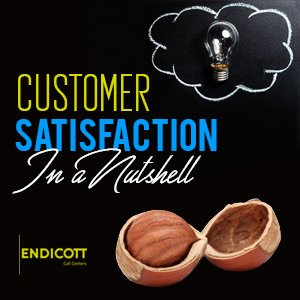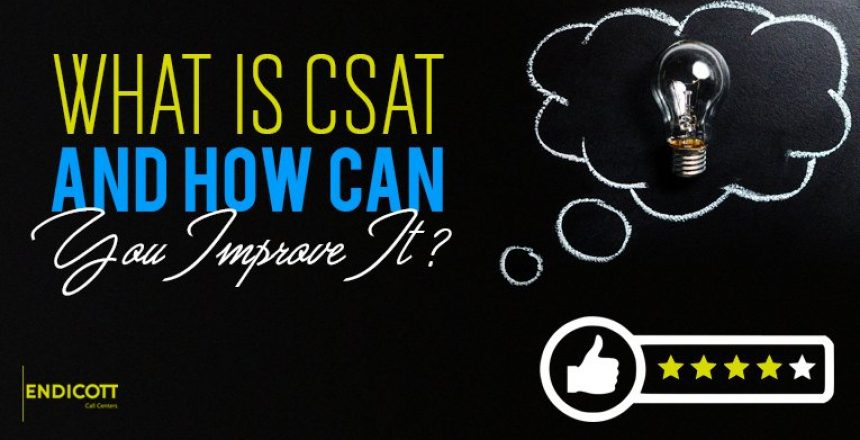Customer service providers have their work cut out for themselves. Tasked with satisfying the client base while simultaneously building brand image, customer satisfaction practitioners are in charge of a powerful metric that controls two very important factors in business: trust and credibility. Once these are gone then so is the bottom line.
Leaders understand the crucial role that customer satisfaction plays in their industry, particularly in more competitive fields where this key performance indicator can mean life or death. But how many take the time to carefully define its parameters as a whole? Doing so can often have revitalizing effects on raw numbers as well as the overall business strategy.
The process begins by first asking two very simple, yet profound questions:
1) What exactly is customer satisfaction?
2) How do we go about refining our processes to ensure continual improvement?
Customer Satisfaction in a Nutshell

Often shortened to CSAT due to its prolonged use in the business world, customer satisfaction is a measurement of how well a company’s products and services align with customer expectations. From another angle, customer satisfaction can be defined as the percentage of the total customer base whose brand experience is at least satisfactory all the way up to exceptional.
How well any firms products and services meet clearly defined goals lies at the heart of organizational business modeling. When senior-level marketers properly manage and monitor this ‘scoreboard’ of sorts, the effects can be very powerful…
- Helps internal sales professionals concentrate on customer needs
- Can serve as an indicator of future hurdles to sales and profitability
- Quantifies a brands ability to build community amongst customers
To effectively manage CSAT levels means setting standards of internal and external expectations. Highly satisfied brand advocates or evangelists, depending upon how well their expectations are met, form the coveted, and highly effective word-of-mouth network that every brand could stand to utilize. Loyal customers will readily accept the mission and the message, making it their own.
Brand Building: A Gateway to Satisfied Customers
Major corporate players like Johnson & Johnson, eBay, and Amazon have demonstrated the power of running customer-centric audits before implementing strategies for improvements in customer service and satisfaction in order to achieve the desired level of brand reputation and trust. The campaign should entail answering a series of questions addressing integrity, intent, capabilities, and results:
- Are we capable of quickly and courageously handling issues, small and large?
- Are we honest in admitting and addressing mistakes and fixing them?
- Where can genuine care and concern meet profits?
- Is our name parallel with excellence, quality, and trust building?
- Do we have a track record of delivering on our promises?
Running such an invaluable diagnostic reveals the character and competence of your organization. The outcome can help you zero in on the areas that need the most improvement.
Ways To Increase CSAT and Improve Overall Experience
Here are some tips to help improve personal connections with your customers:
1) Give customers quick and simple access to the right departmental resources
Put your interactive voice response (IVR) system on a serious diet. Instead of implementing a confusing and time-consuming solutions process, try giving customers an array of simple shortcuts and self-service options. Quick and easy access to the right resources boosts retention and delivers a satisfying experience.
Slimmed down interactive models combined with short wait list times will set you apart from the competition. Statistics show that by the mid-2020s, more than 90% of business to consumer interactions will not be human.
Side note: A simple multichannel approach that consists of text messaging, chat, and email provides greater options for customers to reach out for solutions before potential problems escalate.
2) Train employees to empathize
Fielding customer complaints isn’t an easy task for anyone but is inevitable when providing products and services. The most important thing is to never take these personally. The first step is to acknowledge the concern.
The second step is to listen and probe in order to tailor your set of solutions. Sincerity and empathy are the two best tools for solving customer issues and confers a willingness to accept responsibility in the transaction.
Side note: Try to speak in positives instead of negatives. Focus on what can be done instead of what can’t be done. Pay close attention to the subtleties in language, and carefully curate your responses.
3) Under promise and over deliver
In an effort to find solutions in a timely manner, it’s easy to make empty promises that aren’t practical and can’t be truly fulfilled. Workable, practical solutions go a long way, even if they fall short of customer expectations. Be trustworthy in your interactions, and handle situations with a realistic approach. Nothing builds on trust quite like the straight-talk of transparency. This practice fosters appreciation while building brand loyalty.
4) Get as much feedback as possible
Effective feedback management can take the forms of follow-ups, surveys, rewards, discounts and so on. Eliciting responses from customers shows genuine care, and is a community building strategy. It helps improve CSAT, increases customer retention rates even when reality doesn’t quite meet expectations, and often leads to repeat sales.
Establishing loyalty and trust begins with developing personal connections through the give-and-take nature of feedback loops. Don’t just talk at your customer; take the time to listen and understand their expectation level.
Side note: For example, the franchise chain restaurant Chipotle offers its customers free burritos for a whole year in exchange for completing surveys based on in and out of store experience.
Your company’s most valuable asset is its reputation. And reputation depends on how you treat your customers. CSAT rests on quick and easy access, empathy, delivering on promises, and creating feedback campaigns. Additionally, engagement through personalization reveals the strength of brand intent, integrity, capabilities, and results. Be accountable and your business will thrive. Amicable outcomes create customers for life.

